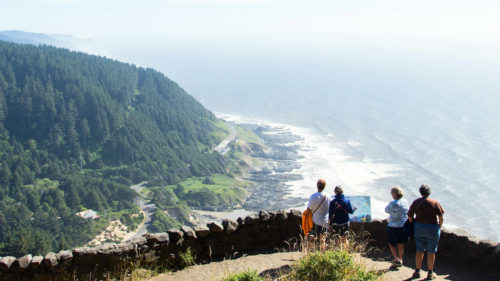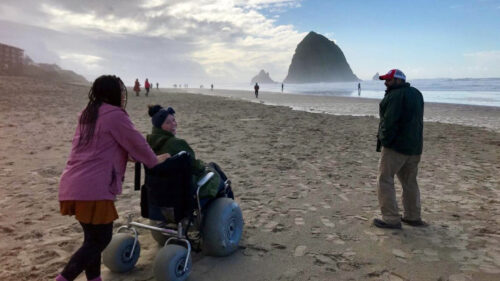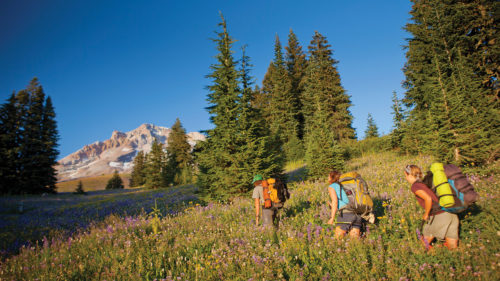Oregon’s outdoors are naturally beloved for their beauty and variety; where else, after all, can enthusiasts hike along a rugged coastline, summit volcanic peaks, walk among waterfalls and traverse the sweeping high desert? Before hitting the trail, hikers, backpackers and outdoor enthusiasts of all stripes should always prepare for various conditions.
Jenny Bruso, Portland-based founder of Unlikely Hikers — a nationwide group that works to advocate for underrepresented outdoorspeople — realized that hikers don’t always know which items to bring and how to use the Ten Essentials. This group of safety items were first formalized as a list about 50 years ago by outdoors groups. Here’s what they are and why they should be in your pack for your next adventure.
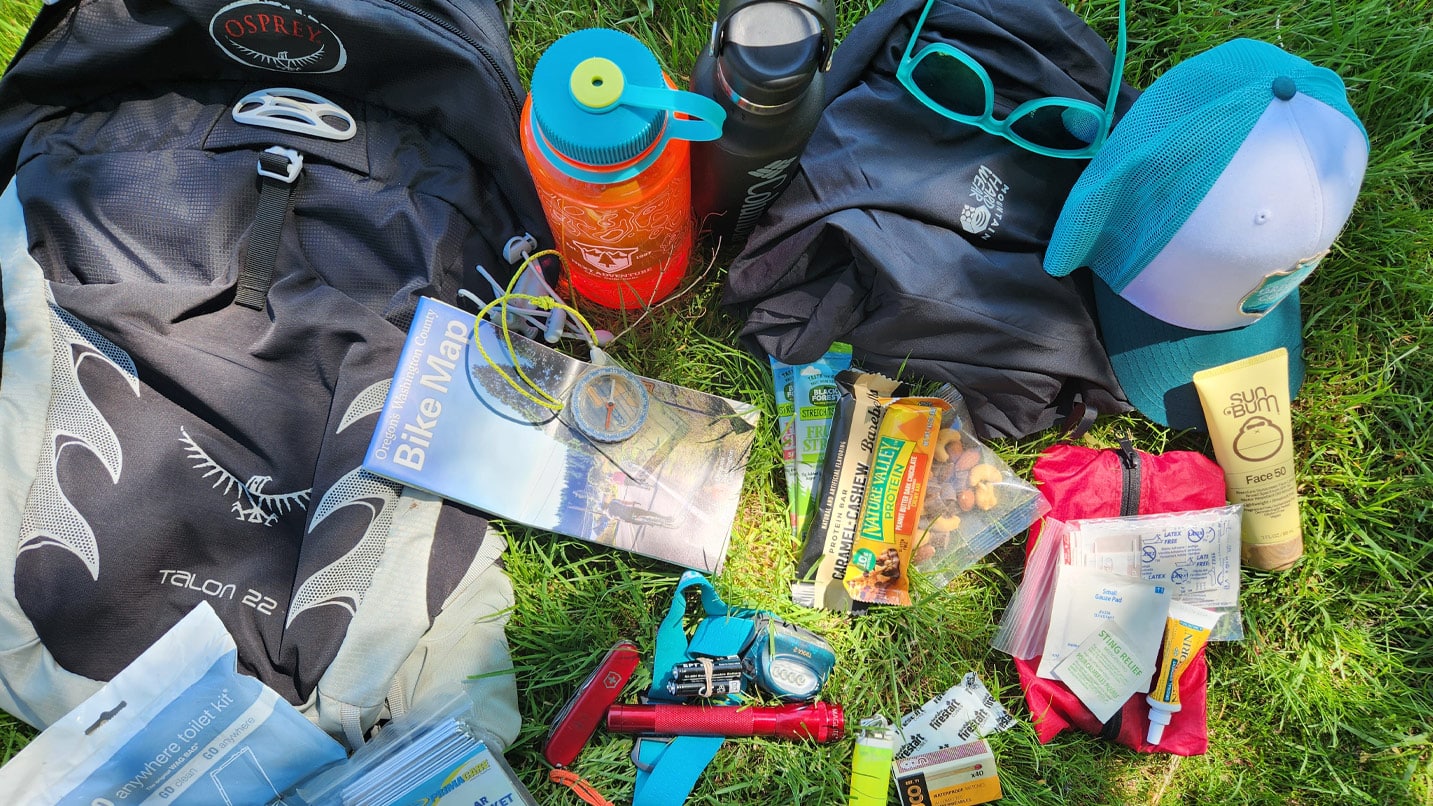
The Ten Essentials for Hiking in Oregon
1. Navigation
Bruso recommends at least two navigation aids for most hikes, so you can more accurately orient yourself outdoors — and just in case one fails. That can include screenshots of trail maps from official websites, hiking books with turn-by-turn directions, paper maps, or a compass for hikers who are familiar with navigational skills. Mobile apps such as MapMyFitness and Gaia GPS can trace your steps but can also deplete your phone’s battery after extended use.
2. Sun Protection
Always protect against sunburns and sun exposure— even on overcast days — by applying sunscreen and packing sunglasses, hats, long-sleeve shirts and pants. Some outdoor shirts and pants are even designed and crafted to offer some sun protection.
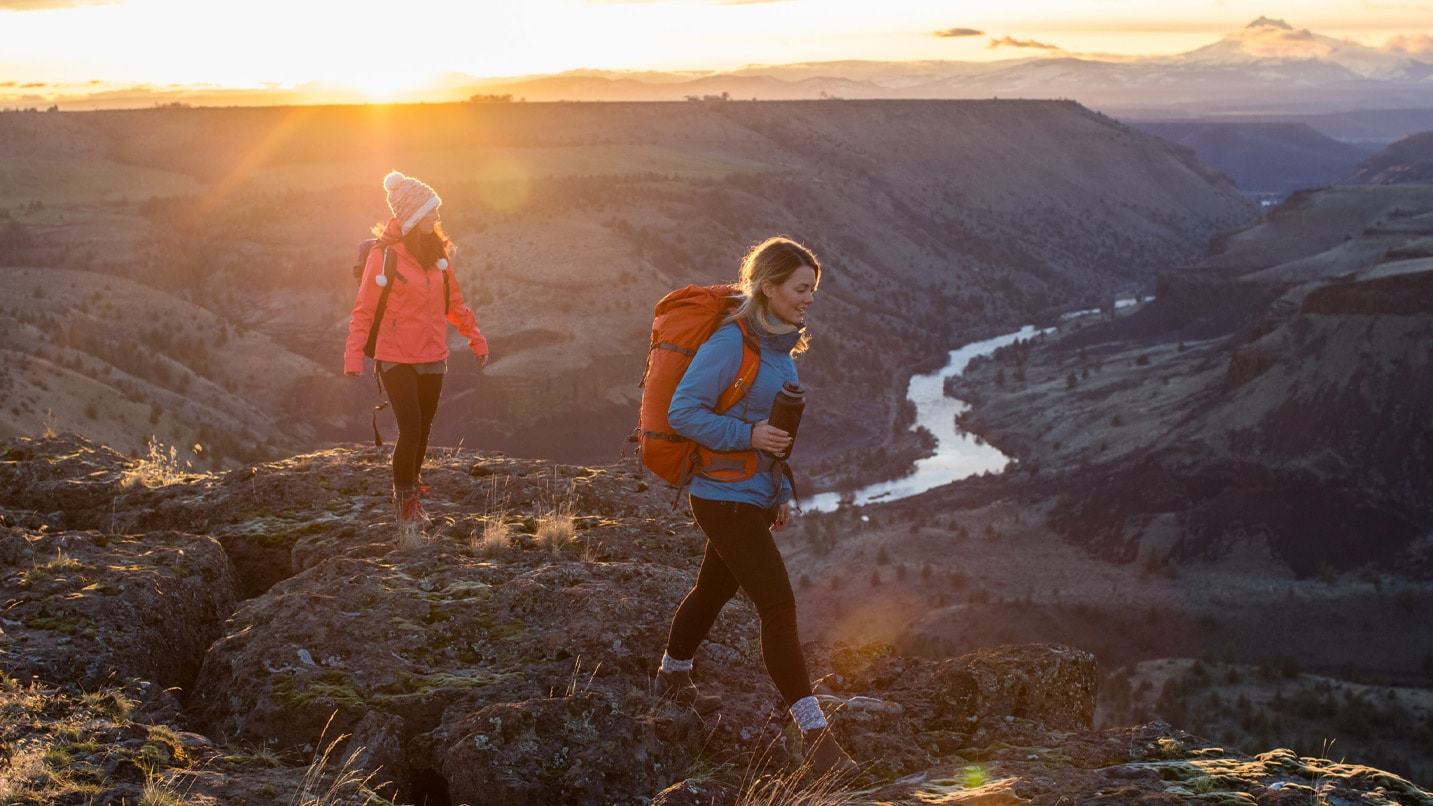
3. Insulation and Clothing
Bring clothing that will protect best against the weather conditions you may encounter. No matter the weather, moisture-wicking materials are preferred, as cotton material retains moisture and can weigh hikers down. In summer aim for outdoor shirts with sun-protection technology and light-colored clothing, which absorbs less heat.
Consider layering in winter, which means bringing clothes you can bundle up in or shed easily, depending on the conditions; this usually involves a base layer of underclothing, a middle layer that protects from chilly temperatures like a lightweight fleece or puffy jacket, and an outer layer for wind and rain, like a waterproof or water-resistant jacket or shell. Don’t forget your hat and gloves.
4. Illumination
You’ll want some form of illumination for seeing in the dark — preferably two forms in case one goes out or its battery dies. Options include flashlights, lanterns and headlamps; extra batteries are likewise helpful.
5. First-Aid Supplies
First-aid kits can save lives, but they can also top 300 items, many of which may never get used. Hikers should add and subtract items as necessary to fit their needs. Some carry tweezers for splinters, antiseptic wipes or gel, bug spray and hydrocortisone for insect bites. Bruso suggests carrying larger bandages for scrapes and falls, a small squeezable bottle filled with water that can clean debris from a wound, and strips of an absorbent fabric — available at craft stores — to stabilize an injury or stop bleeding in a pinch. She also recommends adding personal medications in case you get lost or lose access to medicine.
6. Fire
Fire and smoke can signal search-and-rescue crews and emergency responders, provide heat for staying warm, and act as fuel for cooking. Bring waterproof matches, a fire starter — usually available as a small kit made from biofuel that catches fire easily — and a lighter. Visit Keep Oregon Green for tips on how to prevent human-caused wildfires.
7. Tools and Repair Kit
Pick and choose among some common tools so you can repair broken or faulty equipment; this depends on how you’re traveling but may include duct tape, a multitool, a pocket knife or a screwdriver. Pack a whistle to signal for help.
8. Food
Consider packing extra food to keep you energized and if your plans change unexpectedly. The best choices are calorie-dense, shelf-stable items that don’t require preparation. Options include trail mix, granola bars, nuts and whole fruit like oranges or apples, or freeze-dried fruit packs that are lighter and less perishable.
9. Hydration
A good rule of thumb is to bring a half-liter of water for every hour you expect to hike; longer treks on warmer days, however, may demand more water. Water-treatment tablets, filters and purification tools (that you know how to use) are essential in some areas, and hydration tablets packed with electrolytes are also a good idea. Bring additional water and a bowl if hiking with your dog.
10. Emergency Shelter
If you get stuck outdoors overnight or face extreme weather, you’ll want some kind of emergency shelter. This can be as simple as a tarp or a lightweight space blanket — these weigh just a few ounces — or as robust as a sleeping bag and lightweight bivy sack, which is essentially a waterproof cover for your sleeping bag. If the weather is cooler, you may want to bring a tent to protect against wind and rain.
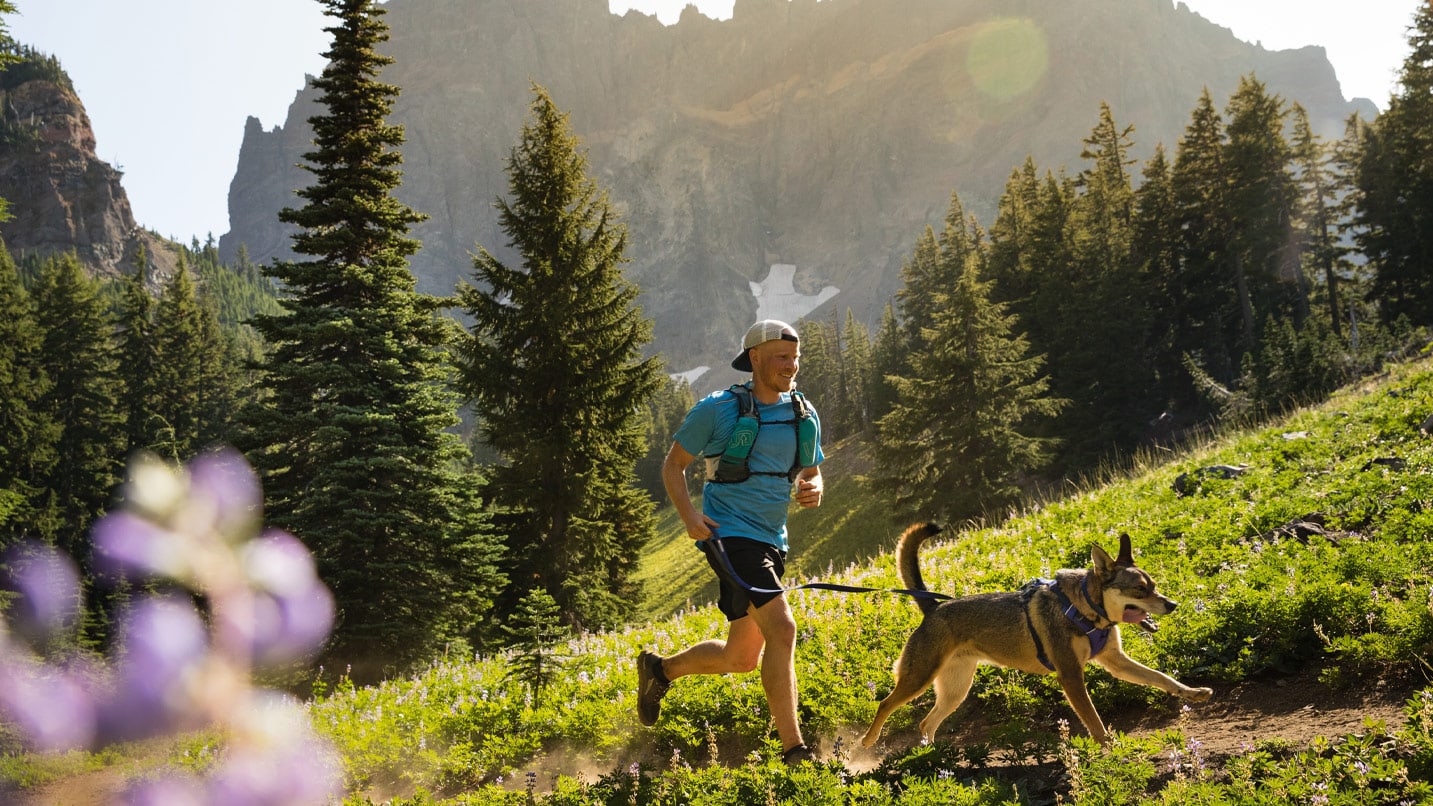
Other Essentials and Helpful Tools on the Trail
Portable charger: Bruso recommends bringing a portable charger for your phone and other mobile devices to stay connected and reachable. If you’re in the backcountry without access to electricity, solar powered chargers may help, but they take several hours to charge a phone, even in direct sunlight.
Toilet kit: Having a portable toilet kit can make bathroom-related emergencies more manageable while keeping the outdoors clean and safe for humans and wildlife. Check out this informative video shared by Unlikely Hikers on one waste-storage option called a Wag Bag that many hikers find useful in outdoor areas without facilities.
Dog-waste bags: If you’re hiking with Fido, make sure you bring along bags to pack out any pet waste, and properly dispose of it in the trash can.
